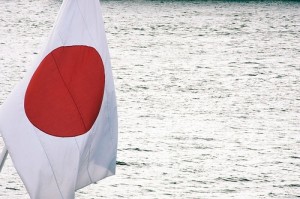2 English Language Aids for Japanese Students
Posted on February 18th, 2014 by Melanie in Uncategorized | No Comments »
Constantly striving to find ways of improving learning techniques for the English language, the Japanese government places a high priority on research into this field. Despite all of their efforts, Japanese children are less adept than children from other countries at speaking English. For this reason, much research is carried out to find ways of improving the teaching of English language in Japanese schools.
Some of this research has paid off in the discovery that combining mnemonics (pictures of objects which are used to help the children remember the letters) with sound contrasting (saying the letter in the picture which helps the children remember how to pronounce each letter) is an effective way for Japanese children to be able to get around the difficulties in pronunciation. Researchers have found that these language aids are successful in enabling children to learn how to pronounce letters from the English alphabet.
Mnemonic Images
Mnemonic images are used as a way for children to remember the shape and sound of English letters by relating them to Japanese words. For example, a picture of a brush, called ‘bulashi’ in Japanese, is overlaid with a picture of the letter ‘b’; an image of a telephone, called ‘denwa’ in Japanese, is overlaid with the letter ‘d’. In this way, it is easier for children to recall the sound of each letter by associating it with an image.
Sound Contrasting
The sounds of the letters ‘b’ and ‘d’ mentioned above are simple examples of phonemes (the smallest units of speech which sound different when used in different words) learned in this way. But the researchers have also had to highlight the differences between the simple phoneme sounds for letters, such as the ‘f’ sound made for the letter ‘f’, and the sounds used for kana syllables (syllables in the Japanese language), such as ‘fu’, which they can be confused with. One way to help children understand this difference is to explain about ‘loan words’ which are words in the Japanese language which originated from foreign languages. An example is the word ‘fulawa’ which means ‘flower’. The children are taught that the first syllable ‘fu’ is actually comprised of the vowel sound ‘u’ which is joined to the ‘f’ sound. In the English language, this distinction between vowel and consonant sounds as phonemes is not necessary.
Positive Results
 During the study for this teaching method, the children already knew the names of letters of the English alphabet and were taught the sounds for these letters both with and without the use of mnemonic images and sound contrasting. The findings showed a significant increase in the children’s ability to recall the sounds of each letter having received tuition using these two study aids. The Japanese government is continually promoting the importance of English language learning, putting an emphasis on teaching methods to be implemented at the elementary school age. Research findings from studies such as this one will go a long way to improving the way the English language can be taught in a way that the children will be able to easily grasp and put into practice.
During the study for this teaching method, the children already knew the names of letters of the English alphabet and were taught the sounds for these letters both with and without the use of mnemonic images and sound contrasting. The findings showed a significant increase in the children’s ability to recall the sounds of each letter having received tuition using these two study aids. The Japanese government is continually promoting the importance of English language learning, putting an emphasis on teaching methods to be implemented at the elementary school age. Research findings from studies such as this one will go a long way to improving the way the English language can be taught in a way that the children will be able to easily grasp and put into practice.
Do you feel that these 2 methods would help in any language? What have you found to be helpful during your English lessons?



